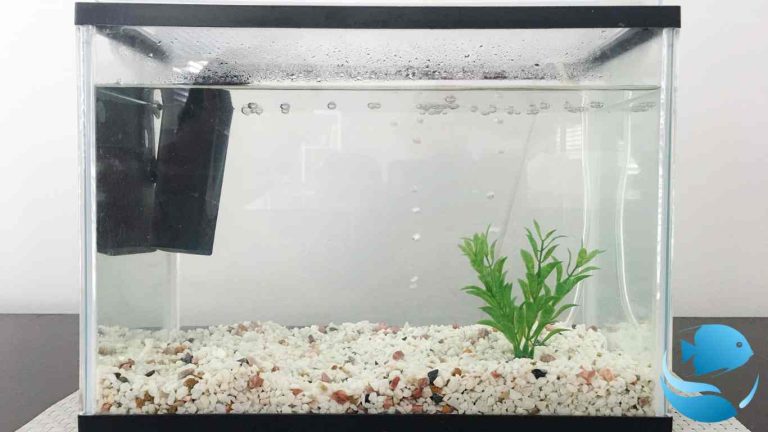Fish Tank Glass Thickness Guide
Have you ever thought about setting up a fish tank in your home? It can be a delightful and relaxing addition to any space. But what about the glass thickness? How thick should the glass be to ensure the safety and longevity of your fish tank? In this article, we will guide you through the process of choosing the right glass thickness for your fish tank.
What is the optimal glass thickness for a fish tank?
When it comes to fish tanks, safety should always be a top priority. The glass thickness plays a crucial role in ensuring the structural integrity of the tank. The general rule of thumb is that the bigger the fish tank, the thicker the glass should be. But how do you determine the exact thickness? Let’s break it down.
Factors to consider in determining the glass thickness
1. Water volume
The water volume of your fish tank is perhaps the most critical factor in determining the glass thickness. The weight of the water exerts pressure on the glass, and the thicker the glass, the better it can withstand this pressure.
A common recommendation is to use the following formula to calculate the minimum glass thickness required for your fish tank:
Glass thickness (inches) = (Water weight in pounds) / [(Tank length in inches) x (Tank width in inches) x (Tank height in inches)].

2. Fish tank dimensions
The dimensions of your fish tank, specifically the length, width, and height, also play a significant role in determining the required glass thickness. As the tank’s dimensions increase, the glass needs to be thicker to withstand the increased pressure exerted by the water.
3. Safety factor
In addition to the minimum required glass thickness, it is also essential to consider a safety factor. This safety factor ensures that the glass can handle any unforeseen stresses that may occur, such as unintentional bumps or accidental impacts.
A commonly recommended safety factor is to increase the glass thickness by an additional 50%. This extra thickness provides an additional layer of protection for your fish tank.
4. Livestock
The type of livestock you plan to keep in your fish tank can also influence the required glass thickness. Some fish species are more active and may bump into the tank walls, creating additional force on the glass. Larger, more aggressive species may require thicker glass to prevent any accidents.
It is always a good idea to research the specific needs and behaviors of the fish species you intend to keep. This will help you determine the appropriate glass thickness to ensure the safety of both the fish and the tank.
5. Display or reef tank
Finally, the purpose of your fish tank can also impact the required glass thickness. If you plan to have a reef tank with live corals and delicate marine life, you may want to opt for a thicker glass. Reef tanks often require more intricate filtration systems and additional equipment, which can add weight and stress to the tank. A thicker glass will provide added stability and support for the added weight.
Common glass thickness recommendations
Now that we have discussed the factors to consider let’s take a look at some common glass thickness recommendations based on tank size:
| Tank Size (Length x Width x Height) | Recommended Glass Thickness |
|---|---|
| Up to 30 inches | 1/4 inch (6 mm) |
| 30-48 inches | 3/8 inch (9 mm) |
| 48-72 inches | 1/2 inch (12 mm) |
| 72-96 inches | 5/8 inch (16 mm) |
| Over 96 inches | 3/4 inch (19 mm) or more |
It is important to note that these recommendations serve as a general guideline. Each fish tank is unique, and factors such as livestock, purpose, and safety factors should also be considered.
Frequently Asked Questions
1: Can I use acrylic instead of glass for my fish tank?
Yes, acrylic is an alternative to traditional glass for fish tanks. Acrylic is lighter, stronger, and more impact-resistant than glass. However, acrylic is more prone to scratching and can discolor over time. Additionally, acrylic tanks are generally more expensive than glass tanks.
2: What are the disadvantages of using thin glass for a fish tank?
Using thin glass for your fish tank can pose several risks. Thin glass may not be able to withstand the pressure exerted by the water volume, leading to leaks or even tank failure. Thin glass is also more susceptible to damage from accidental impacts or bumps, putting the fish and the tank at risk.
3: How can I reinforce the glass thickness of my existing fish tank?
If you already have a fish tank with glass that you suspect may be too thin, there are a few ways to reinforce it. One option is to add an additional pane of glass to the outside of the tank, essentially creating a double-layered construction. Another option is to use adhesive reinforcement strips made specifically for fish tanks. These strips adhere to the inside of the tank and provide added support.
Final Thoughts
Choosing the right glass thickness for your fish tank is essential for the safety and longevity of your aquatic inhabitants. By considering factors such as water volume, tank dimensions, safety factors, livestock, and tank purpose, you can determine the appropriate glass thickness. Remember to always prioritize safety and provide a secure and comfortable environment for your fish. Happy fish-keeping!






